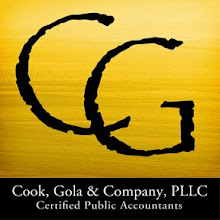Intuit’s QuickBooks is a low cost, easy to use accounting software package popular with many small businesses. If you believe the advertising, installing QuickBooks will make you a CPA, financial analyst, and cost analyst with the flip of a switch. Even better, those nasty accounting problems surrounding inventory, billing and payroll are all things of the past. All you have to do in lock, load and click.
Of course this isn’t true; but, it is amazing the number of people that come to our offices proudly proclaiming that they no longer need our services. They have QuickBooks!
QuickBooks is designed to offer someone with little or no accounting background the ability to record payables and pay bills, and record sales with their related receivables. It is the electronic version of the “check stub” checkbook and the “expandomatic” file folder. In skilled hands, however, it can be more. The software allows business owners to design a chart of accounts with subcategories. This makes it possible to create financial reports by location or product or both. It has a basic inventory management system that can be tied to the billing system. These are nice features, but they have limitations. The payroll system is similar in that it offers a good basic payroll preparation process with payroll tax calculations.
Does this mean that we are anti-QuickBooks? Absolutely not. We encourage our clients to use QuickBooks with our assistance. As CPAs, we want our clients to enter as much data as possible after we set up their chart of accounts and teach them how to properly use the product. When properly used, QuickBooks will offer a good solution for their financial management system.
But the basic QuickBooks program has limitations. It is not designed for a high volume of transactions or multiple users. If the number of simultaneous users exceeds three, you need to start looking for other options. If your inventory and product costing is becoming more complex, then you need to look elsewhere. In short, when your needs become for demanding, you need to look elsewhere. But where should you look?
Depending on your business, you may want to look at QuickBooks Enterprise Solution. This is a more robust version of QuickBooks. Enterprise is better suited to handle multiple users and handle higher volumes of transactions. We have moved clients to the Enterprise Solution product with good success.
Enterprise Solution also has limitations. While it handles more users and more transactions, it still does not handle the specialty accounting areas well. If your business needs are moving in this area, then you are going to have to get your checkbook out. In all likelihood, you will be moving to some type of modular accounting system. In modular systems, you buy the general ledger package and add to that module. Typical installations include billing and accounts receivable, inventory and cost control, payroll and payroll reporting. In a retail environment, you would also add a point of sale module. Each module has its own installation requirements and is priced according to complexity. Sage Software’s MAS 90 is a popular move-up option. As we said earlier, be prepared to write a check. While QuickBooks Enterprise with installation will run about $3,000, the MAS 90 product with installation and training will be an additional $10,000 or more. Once you pass MAS 90 or its competitors, then you get into the expensive custom designed software. These are usually six figure packages that require constant maintenance.
Our message today is that you will need to seek the accounting software that solves your problem. Trying to save money may leave you with too little computing power. Just throwing money at the problem may not create the financial system that you need. We recommend that you steer clear of modules that provide little benefit for the investment. Choose your software wisely. The good news is that there are solutions for every financial system.
Subscribe to:
Post Comments (Atom)



No comments:
Post a Comment